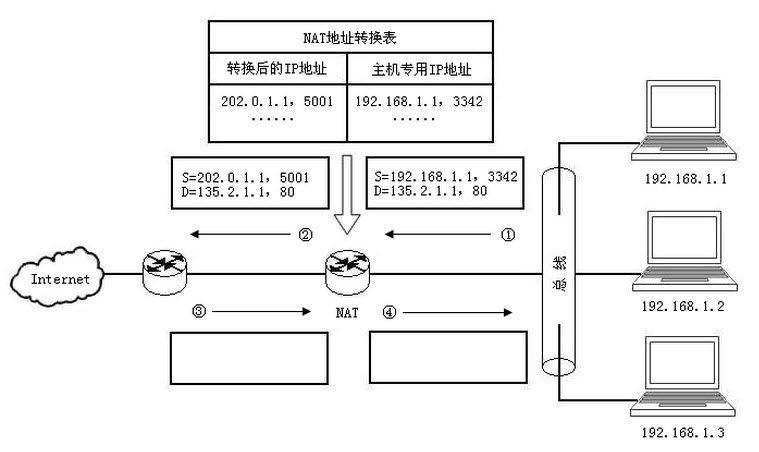如下图所示为网络地址转换(NAT)的一个实例。
根据图中信息,标号为④的方格中的内容应为()。
A.S=135.2.1.1,80 D=202.0.1.1,5001
B.S=135.2.1.1,80 D=192.168.1.1,3342
C.S=202.0.1.1,5001 D=135.2.1.1,80
D.S=192.168.1.1,3342 D=135.2.1.1,80
参考答案:B
解析:
网络地址转换(NAT)设计的基本思路:为每一个公司分配一个或少量的p地址,用于传输Intemet的流量;在公司内部的每一台主机分配一个不能够在Internet上使用的保留的专用IP地址。
如图3-1所示的网络地址转换实例中,如果内部网络地址为192.168.1.1的主机希望访问Internet上地址为135.2.1.1的Web服务器,那么它会产生一个IP地址为192.168.1.1,源端口号为3342,目的IP地址为135.2.1.1,目的端口号为80的IP分组,在图3-1中标记为“S=192.168.1.1,3342 D=135.2.1.1,80”。该IP分组到达执行NAT功能的路由器时,路由器会将分组的源IP地址从内部专用地址转换成可以在外部Internet上路由的全局IP地址。在图3-1中标记为“S=202.0.1.1,5001 D=135.2.1.1,80”。需要注意的是,分组中地址从192.168.1.1转换成202.0.1.16时,传输层客户进程的端口号也需要跟随转换,本例是从3342转换为5001。之所以要同时考虑传输层客户进程端口号的转换,是因为一些应用层的应用程序在执行过程中可能需要在源IP地址与目的IP地址之间除了交换TCP数据之外,还需要交换UDP数据。根据传输层进程通信的规定,TCP与UDP的端口号分配是不同的。那么,TCP与UDP协议的端口号是变化的,因此必须同时考虑IP地址与端口号之间的转换关系。可见,对于内部网到Internet的请求分组,经过NAT转换之后,源IP地址、源端口号发生变化,目的IP地址、目的端口号保持不变。
Web服务器给地址为192.168.1.1的主机返回请求结果时,进入NAT路由器之前的IP分组的源IP地址为135.2.1.1,源端口号为80,目的IP地址为202.0.1.1,目的端口号为5001,即在图3-1中标号为③的方格中的内容应为“S=135.2.1.1,80,D=202.0.1.1,5001”,该IP分组经过查询路由器中NAT转换表可知,目的IP地址202.0.1.1应转换成192.168.1.1,目的端口号5001应转换成3342,而源IP地址、源端口号保持不变。可见,在图3-1中标号为④的方格中的内容应为“S=135.2.1.1,80,D=192.168.1.1,3342”。
